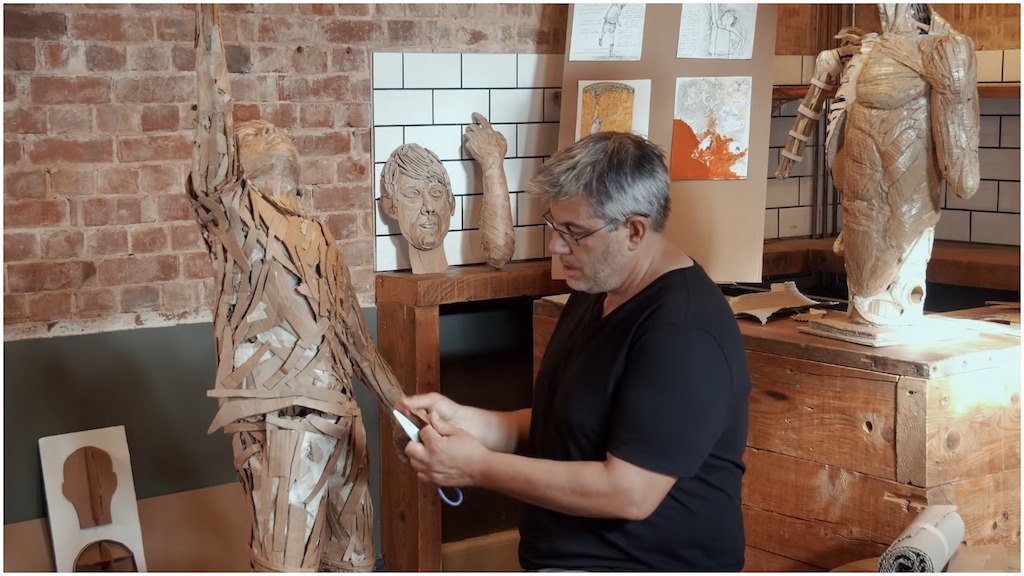Wired visited disabled artist James Lake to learn more about how he creates his wonderfully detailed human sculptures out of different types of recycled cardboard. Lake explains how the different textures of cardboard really lend to the intricacies of recreating every facet of the human body. Lake takes immense pride in the simplicity of his tools and how each piece naturally fits within another.
The tools of my trade are very, very simple, and kind of paired down. I use cardboard, masking tape, hot melt glue gun. I use scissors, I use a craft knife. I very much like the idea that when you’re working with card, it’s brilliant to have a restricted palette of colors as it were. Because you don’t have a sophisticated set of materials, you have to be really creative with the marks that you make.

He readily admits that he makes mistakes, but he chooses to incorporate those mistakes into his work, making each piece unique.
So it’s very different to say carving in stone, where if you might make a mistake, and I make so many mistakes with my work that you would not believe. And it’s in those kinds of imperfections that you kind of find the personality, and the various kind of aspects that make the work individual.
Lake also talks about how his disability influenced his use of cardboard and his strong belief that art is for everyone influenced his creative process.
I work with cardboard for its immediacy, ease of availability and low environmental impact. My disability and dyslexia have also influenced my choice of material and the way I create my sculptures. For over twenty years I have created life-size three-dimensional portraits of people. I have also made animals, anatomical models, furniture, and other large-scale work for commission. I believe in art for all, art beyond race, gender, age, ability, and disability.
0 Commentaires